Tibet Museum Inaugurates Exhibition on Rare Photos of Younghusband’s 1904 Military Expedition to Lhasa
[Source:tibet.net]
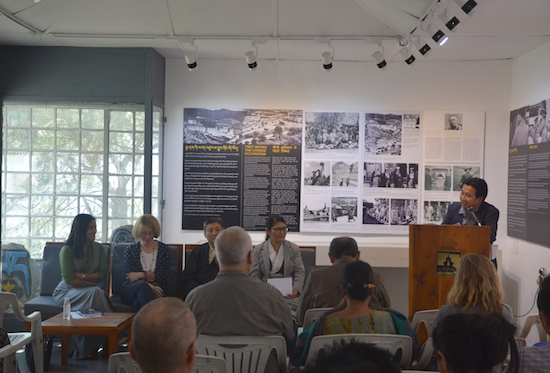
Mr Tashi Phuntsok, Director of Tibet Museum, delivering the welcome address at the inaugural session of the exhibition.
DHARAMSHALA: The Tibet Museum of Department of Information and International Relations, today inaugurated a photo exhibition titled ‘Capturing Tibet: Colonialism and the Camera during the Mission to Lhasa’.
The exhibition is a joint collaboration between Tibet Museum, National Museums Liverpool and University of Manchester. The exhibition features 12-Panels (two albums) of unseen photographs captured during the Younghusband military expedition to Lhasa in 1904. The photographs were taken by two British officers; John Claude White and Gerald Irvine Davys, and sourced from the collections of National Museums Liverpool.
Addressing the inaugural session, Dr Emma Martin, lecturer in Museology at University and curator of the exhibition, gave a brief introduction of the exhibition and how the photographs were discovered.
“In the 1980’s, a German professor decided to make a journey across Europe and assess all of the Tibetan collections that European museums held. And when he got to Liverpool, he found out that Liverpool’s Tibet collection was unique in terms of its breadth and number,” she said.
“The discovery of this incredible collection of photographs captured during British India’s military expedition offered a fresh historical context. The collection is precious not only because of what it represents but also because it shows the way the British understood Tibet at that point of time,” she added.
“Tibet is often an imagined place for the west. It is a place that is shrouded in spirituality and religiosity. Therefore, these photographs are significant because in addition to the beauty of the landscape and culture of the people, it also serves as a tool to present the colonial violence that took place and also challenge the prevailing mindset on Tibet,” she noted.
Secretary Sonam Norbu Dagpo spoke about the impact of imperial Britain’s policies on Tibet and how it affected Tibet’s later political developments and the subsequent occupation of Tibet.
“To further their political influence and safeguard their colonies in Asia, Britain treated Tibet as a suzerainty of China during the intrigues of the Great Game era,” he said.
“In that regard, the 1904 Younghusband military expedition to Tibet was also a part of this complex political situation. In order to enter Tibet, the British contacted China. However, that policy failed. As a result of which, this expedition was deployed to invade Tibet under the pretext of a border and trade dispute,” he explained.
“The failure to influence Tibetan government through the Chinese at that time has prompted Lord Curzon, the British viceroy in India to declare that ‘the so-called suzerainty of China over Tibet [is] a constitutional fiction, a political affectation which has been maintained because of its convenience to both parties,” Secretary Dagpo recalled.
Secretary Tenzin Dhardon Sharling spoke about the impact of colonialism on the post -colonial world. She also shared her views on photography as a powerful tool to inform and galvanise people into action.
“The rare photographs that is being exhibited here shed a light on how the British back then had an appetite for colonial photography to showcase their conquest and also to capture the ways of the natives,” she said.
She also emphasized the importance of photography in exposing the invisibility of China as a colonial empire. She further recalled a photograph used by a Chinese construction company to legitimize the Chinese government’s destruction of the larung gar institute.
The opening remarks of the exhibition was delivered by Mr Tashi Phuntsok, Director of Tibet Museum and the vote of thanks was delivered by Ms Tsering Yangkyi, Additional secretary of DIIR.
The exhibition is Tibet Museum’s first joint venture with any foreign institute or university. It will be open from 14 April till 24 May 2017.
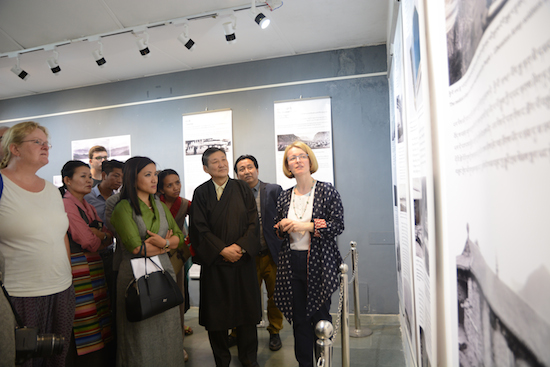
Dr Emma Martin explaining the exhibits to Secretary Sonam Norbu Dagpo and other guests, 14 April 2017.
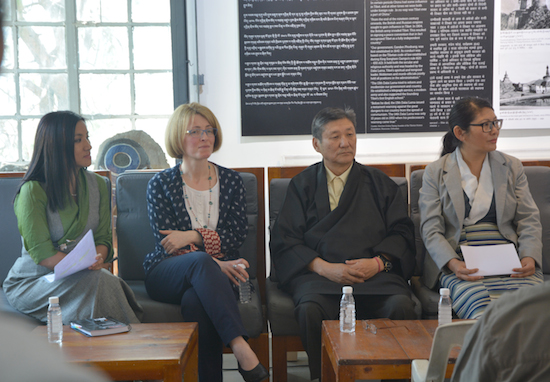
Guests at the exhibition.
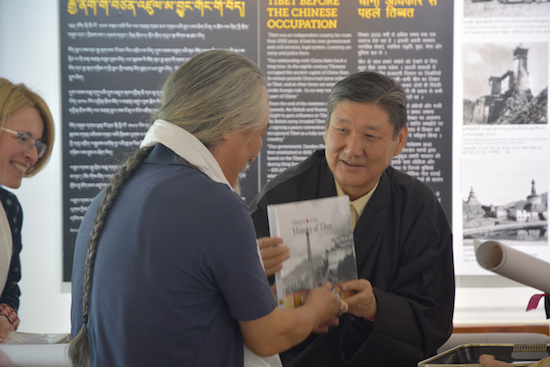
Secretary Sonam Norbu Dagpo presenting a book to thank Mr Tashi Tsering for his artistic contributions towards the exhibition.
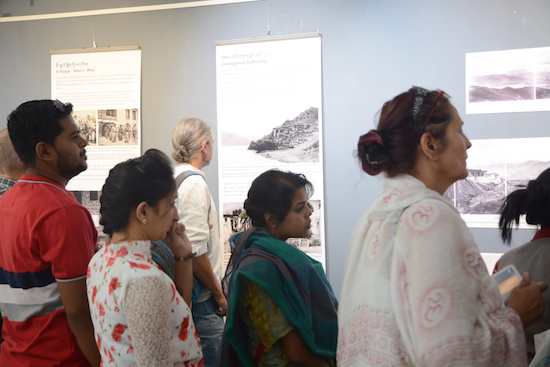
Visitors at the exhibition.
